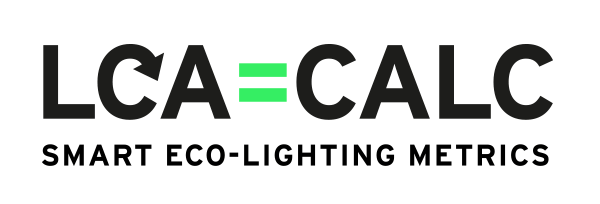EF3.1 Method
Climate change (CC)
kg CO2 eq
Accounts for the effect, through radiative forcing, of greenhouse gases on the energy balance of the atmosphere over a time horizon of 100 years.
Ozone depletion (OD)
kg CFC-11 eq
Accounts for the destructive effect on the stratospheric ozone layer over a time horizon of 100 years.
Human toxicity, cancer (HTC)
CTUh
(Comparative Toxic Unit for humans)
Accounts for the effect on the human population of toxic emissions, represents an estimate of the increase in cases of disease (cancer).
Human toxicity, non-cancer (HTC)
CTUh
(Comparative Toxic Unit for humans)
Accounts for the effect on the human population of toxic emissions, represents an estimate of the increase in cases of disease (non-cancer).
Particulate matter (PM)
disease incidence due to the emissions of PM
Accounts for the respiratory effect on the human population of primary and secondary particulate matter.
Ionising radiation (IR)
kBq U235 eq
Accounts for the adverse effect on the human population of ionizing radiation.
Photochemical ozone formation (POF)
kg NMVOC eq
Accounts for the adverse effect on the human population of summer smog, i.e., tropospheric ozone concentration increase.
Acidification (A)
mol H+ eq
Accounts for the accumulated exceedance of the critical acidity load of the sensitive area in terrestrial and freshwater ecosystems.
Eutrophication, terrestrial (EuT)
mol N eq
Accounts for the accumulated exceedance of the critical nitrogen load of the sensitive area in terrestrial and freshwater ecosystems.
Eutrophication, freshwater (EuF)
kg P eq
Expression of the degree to which the emitted nutrients reach the freshwater ecosystem (phosphorus considered as limiting factor).
Eutrophication, marine (EuM)
kg N eq
Expression of the degree to which the emitted nutrients reach the marine ecosystem (nitrogen considered as limiting factor).
Ecotoxicity, freshwater (EcT)
CTUe
(Comparative Toxic Unit for ecosystems)
Accounts for the effect on aquatic freshwater species in the water column of toxic emissions, represents an estimate of the potentially affected fraction of species (PAF) integrated over time and volume.
Land use (LU)
Soil quality index (dimensionless)
Accounts for the effect of land use on biotic production, erosion resistance, mechanical filtration and groundwater replenishment.
Water use (WU)
m3 world eq
Accounts for effect of water use on the Relative Available Water REmaining (AWARE) per area in a watershed, after the demand of humans and aquatic ecosystems has been met, i.e., deprivation-weighted water consumption.
Resource use, minerals and metals (RUMM)
kg Sb eq
Accounts for the depletion of abiotic resources, based on the use-to-availability ratio considering ultimate reserves.
Resource use, fossils (RUF)
MJ
Accounts for the depletion of fossil fuels, based on the lower heating value (full substitution among fossil fuels is assumed).
